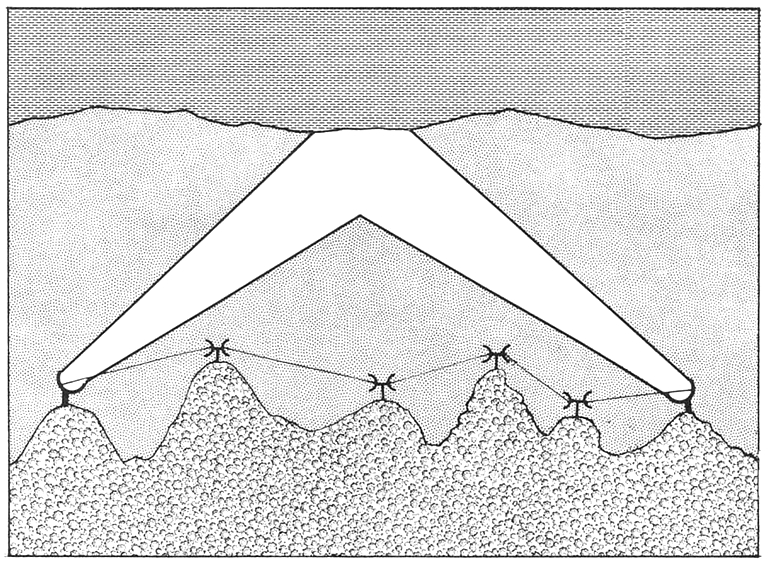|
||||||||||||||||||||||
![Home - Air Power Australia Website [Click for more ...]](APA/APA-Title-Main.png) |
||||||||||||||||||||||
![Sukhoi PAK-FA and Flanker Index Page [Click for more ...]](APA/flanker.png) |
![F-35 Joint Strike Fighter Index Page [Click for more ...]](APA/jsf.png) |
![Weapons Technology Index Page [Click for more ...]](APA/weps.png) |
![News and Media Related Material Index Page [Click for more ...]](APA/media.png) |
|||||||||||||||||||
![Surface to Air Missile Systems / Integrated Air Defence Systems Index Page [Click for more ...]](APA/sams-iads.png) |
![Ballistic Missiles and Missile Defence Page [Click for more ...]](APA/msls-bmd.png) |
![Air Power and National Military Strategy Index Page [Click for more ...]](APA/strategy.png) |
![Military Aviation Historical Topics Index Page [Click for more ...]](APA/history.png)
|
![Intelligence, Surveillance and Reconnaissance and Network Centric Warfare Index Page [Click for more ...]](APA/isr-ncw.png) |
![Information Warfare / Operations and Electronic Warfare Index Page [Click for more ...]](APA/iw.png) |
![Systems and Basic Technology Index Page [Click for more ...]](APA/technology.png) |
![Related Links Index Page [Click for more ...]](APA/links.png) |
|||||||||||||||
![Homepage of Australia's First Online Journal Covering Air Power Issues (ISSN 1832-2433) [Click for more ...]](APA/apa-analyses.png) |
||||||||||||||||||||||
| Last Updated: Mon Jan 27 11:18:09 UTC 2014 | ||||||||||||||||||||||
|
||||||||||||||||||||||
| Tropospheric
Scatter
Communications
Systems Technical Report APA-TR-2010-0801 |
||||||||||||||||||||||||||||||||||||||||||||||||||||||||||||||||||||||||||||||||||||||||||||||||||||
| by
Dr
Carlo
Kopp, AFAIAA,
SMIEEE,
PEng August, 2010 Updated April, 2012 Text © 2010 - 2012 Carlo Kopp |
||||||||||||||||||||||||||||||||||||||||||||||||||||||||||||||||||||||||||||||||||||||||||||||||||||
 PLA CETC TS-504 tactical digital troposcatter communication system on parade in 2009. This system has been deployed extensively to support HQ-9 and S-300PMU2 mobile SAM batteries, providing digital connectivity to the fixed IADS C3 network. Range and datarate performance have not been disclosed to date (image Chinese internet). |
||||||||||||||||||||||||||||||||||||||||||||||||||||||||||||||||||||||||||||||||||||||||||||||||||||
Background
|
||||||||||||||||||||||||||||||||||||||||||||||||||||||||||||||||||||||||||||||||||||||||||||||||||||
Soviet /
Russian Troposcatter Systems
|
||||||||||||||||||||||||||||||||||||||||||||||||||||||||||||||||||||||||||||||||||||||||||||||||||||

|
||||||||||||||||||||||||||||||||||||||||||||||||||||||||||||||||||||||||||||||||||||||||||||||||||||
MNIRTI R-423-1 Brig-1/R-423-2A
Brig-2A/R-423-1KF
|
||||||||||||||||||||||||||||||||||||||||||||||||||||||||||||||||||||||||||||||||||||||||||||||||||||
 |
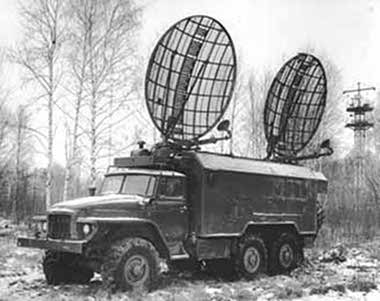 |
||
 |
|
MNIRTI R-444 Eshelon / R-444-7,5 Eshelon D
 |
The R-444 Eshelon and
R-444-7,5 Echelon D UHF band digital troposcatter relay stations were
developed and deployed between 1981 and 1984. These designs provide 1 Megabit/s capability to 130 - 150 km, or 48 kilobits/s to 230 km. |
MNIRTI R-420 Atlet-D
 |
MNIRTI developed the R-420
Atlet D series in 1975 as a replacement for the widely used R-408 and
R-410 systems, retaining the same parabolic antenna configuration. The station electronics were significantly improved in comparison with the 1960s designs. The R-420 receiver NF was improved by 3 dB, phaselocked oscillators were employed to drive the demodulators, and polarisation diversity was employed to improve performance. The system employed paired Atlet AS-16 16 metre diameter antennas providing a 35 dB gain. Range per relay hop was improved to 350 to 400 km. |
MNIRTI R-417S Baget S/R-417 Baget
 |
The P-417 Baget 1 digital
relay system was deployed in 1980, after protracted research which
began in 1966. The system provides either 60 digital voice channels, or 480 kilobits/sec of data. |
To improve performance the design employs 16
channel frequency
diversity. Range per hop in a relay was 200 km, with up to 10 hops
permitted for a relay chain length of 2,000 km.
The static R-417S variant formed the backbone of the Warsaw Pact “Bars” (Leopard) troposcatter relay network, comprising no less than 26 sites, with 54 R-417S relay stations and an aggregate span distance of ~5,000 km. Two “Bars” spans employed the longer ranging R-420S systems. The network, which spanned the territories of the USSR, Poland, East Germany, Czechoslovakia, Hungary and Bulgaria, was commissioned in 1987 and fell into disuse three years later with the collapse of the Soviet regime.
Further material on the Warsaw Pact “Bars” troposcatter network can be found at: http://rammstein.dfmk.hu/~s200/tropo.html
The static R-417S variant formed the backbone of the Warsaw Pact “Bars” (Leopard) troposcatter relay network, comprising no less than 26 sites, with 54 R-417S relay stations and an aggregate span distance of ~5,000 km. Two “Bars” spans employed the longer ranging R-420S systems. The network, which spanned the territories of the USSR, Poland, East Germany, Czechoslovakia, Hungary and Bulgaria, was commissioned in 1987 and fell into disuse three years later with the collapse of the Soviet regime.
Further material on the Warsaw Pact “Bars” troposcatter network can be found at: http://rammstein.dfmk.hu/~s200/tropo.html
NPP Radiosvyaz R-412A/B/F/S TORF

An R-412A Torf-A tactical
troposcatter relay of the DDR NVA on a Ural-375 truck.
The R-412 Torf was developed as a
centimetric band mobile tactical troposcatter system, in four distinct
variants, to provide a point-to-point or relay capability over ranges
of 150 to 560 km:
- R-412A Torf-A army level mobile tactical troposcatter system on the Ural 375 6 x 6 truck;
- R-412B Torf-B divisional level mobile tactical troposcatter system on the MTLB tracked vehicle, with power provided by a ГАБ-8-Т/230 generator driven by a PTO;
- R-412F Torf-F front (corps) level mobile tactical troposcatter system on the Ural 375 6 x 6 truck, including a Sosna-M microwave relay on a ZIL-131 truck;
- R-412S Torf-S static variant for fixed site applications, based on the R-412F, but using a 20 metre Sosna-18S mast system.
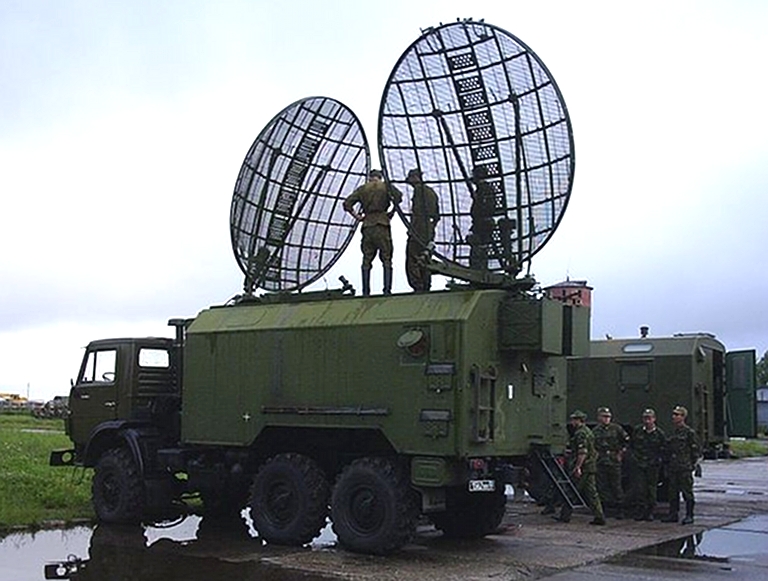
A Russian Army R-412A Torf-A
tactical troposcatter relay carried on a KAMAZ-4310.
MNIRTI R-410/R-410-5,5/R-410-7,5 Atlet / Albatros

A disused R-410 relay system
antenna installation in the Amur region (via Russian internet).
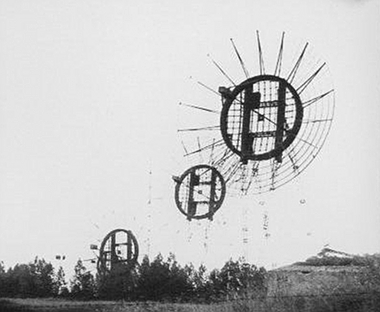 |
The R-410 supplanted the
R-408 series in production, from 1967. It was built in three main variants with 5.5 metre, 7.5 metre and 10 metre diameter parabolic antennas. Range varied between 150 and 250 km, and a relay system could be constructed with up to 10 hops. The system provided 24 full duplex analogue telephone voice channels. |
MNIRTI R-408/R-408M Baklan
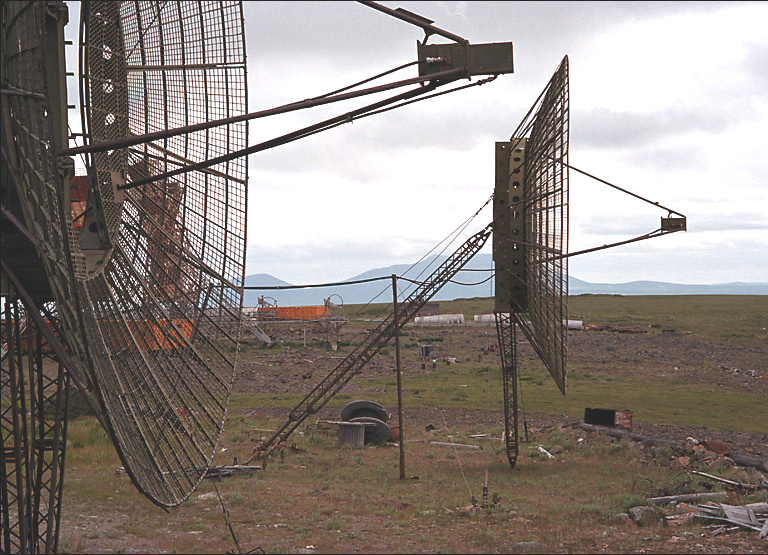
A disused and decaying R-408 system
antenna installation in Russia (via Russian internet).
 |
The UHF-band R-408 Baklan
(Cormorant) was developed in 1962 by MNIRTI to provide a static
multihop troposcatter relay capability for use in sparsely populated
areas. The designed was enhanced in 1964 and continued in production as the R-408M. The R-408 is readily identified by the 10 metre parabolic antenna diameter. |
The system delivered a range of 120 - 150 km
between stations. The R-408 provided 12 analogue telephone channels
using Frequency Division Multiplexing.

A disused and decaying R-408 system
antenna installation in Russia (via Russian internet).

PLA Troposcatter Systems

Deployed TS-504 antenna system
(image Chinese internet).
The CETC technical brochure for the TS-504
states no more than the obvious, which is that the system is a Chinese
analogue to the Soviet R-423 series. The system was prominently
displayed during the 2009 military parade, and is known to have been
exported to Pakistan.
The TS-504 is frequently employed to provide digital IADS connectivity to mobile HQ-9 and S-300PMU2 / SA-20B SAM batteries.
Some claims have emerged that the PLA's troposcatter systems were supplied by the Ukraine. The distinctly different antenna designs on the Ukrainian R-423-1 variants and TS-504 would suggest otherwise. Chinese researchers have published a respectable number of research journal publications on troposcatter communications, including papers describing the use of relatively advanced modulation techniques.

The TS-504 is frequently employed to provide digital IADS connectivity to mobile HQ-9 and S-300PMU2 / SA-20B SAM batteries.
Some claims have emerged that the PLA's troposcatter systems were supplied by the Ukraine. The distinctly different antenna designs on the Ukrainian R-423-1 variants and TS-504 would suggest otherwise. Chinese researchers have published a respectable number of research journal publications on troposcatter communications, including papers describing the use of relatively advanced modulation techniques.

Stowed TS-504 (image
Chinese internet).
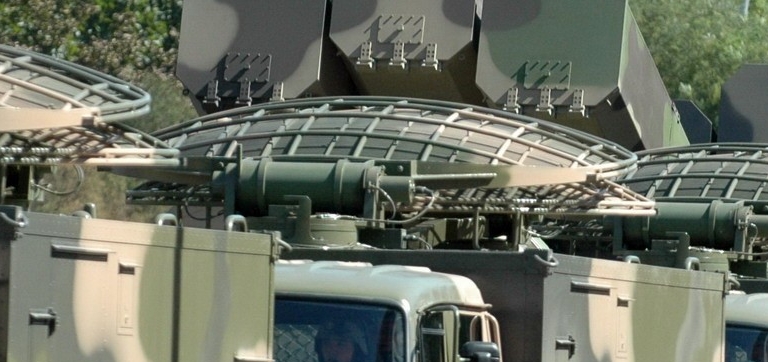
Detail of stowed TS-504 antenna suite (image Chinese internet).


Detail of stowed TS-504 antenna suite (image Chinese internet).

The PLA have used the TS-504
extensively to support high mobility S-300PMU2 Favorit / SA-20B
Gargoyle and HQ-9 SAM batteries with IADS connectivity. Depicted a 96L6
radar, 5P85TE2 TEL with a BAZ-69022 tractor, and a TS-504. Datalink
interfaces between these systems have not been disclosed to date
(Chinese internet).
CETC TS-510/GS-510 Troposcatter Communication System

 |
The CETC TS-510 / GS-510
Troposcatter Communication System is a short range tactical design
which is available in a static relocatable GS-510 variant, and a fully
mobile TS-510 variant. To date no official figures have been released detailing range and data rate performance. |

Western Troposcatter Systems
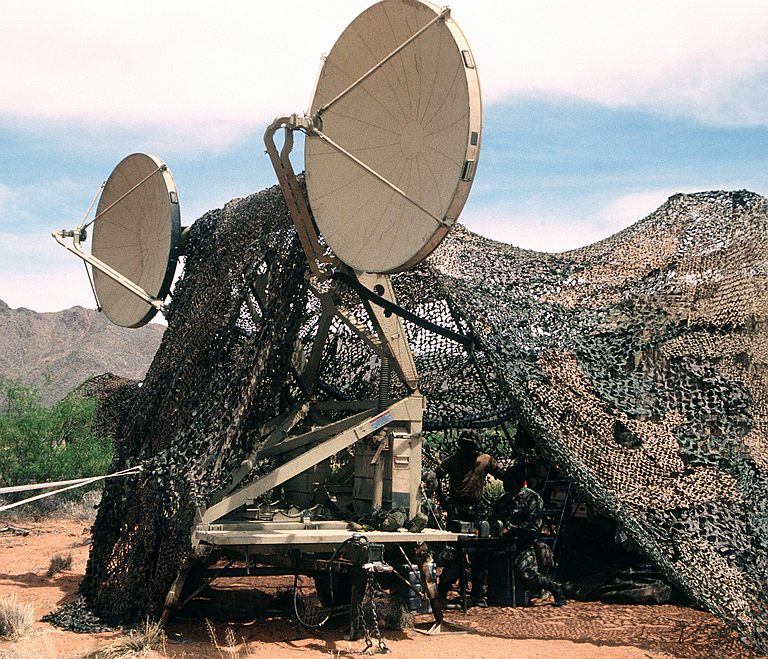
AN/TRC-170 (US DoD).
Variants of the AN/TRC-170 have been the
primary tactical troposcatter system used by US forces for two decades.
The system has proven highly effective in supporting ground force
manoeuvre elements in conflicts since 1990. The system is now
considered legacy equipment, but continues in operation with block
upgrades applied. The performance of the system is cited at data rates
of 4 Megabits/s up to 16 Megabits/s with an upgrade kit installed.

AN/TRC-170 being deployed (US DoD).

AN/TRC-170 (US DoD).
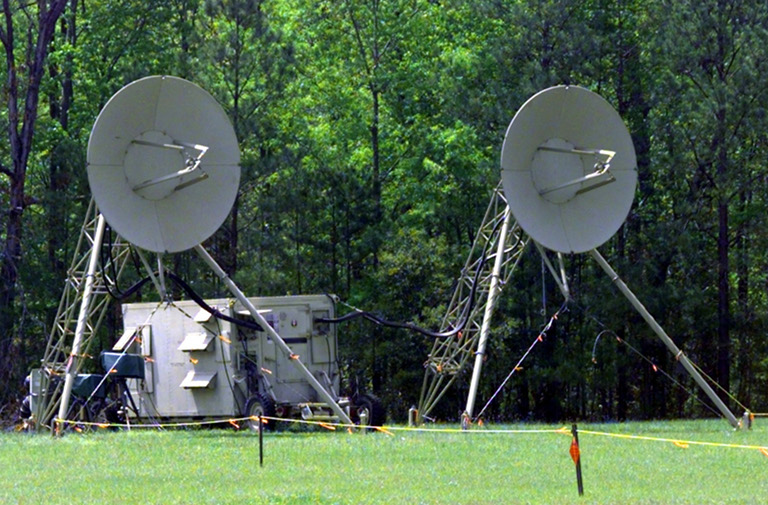

AN/TRC-170 being deployed (US DoD).

AN/TRC-170 (US DoD).

An AN/TRC-170(V) tactical digital
tropospheric scatter radio site of the 240th Combat Communications
Squadron, South Carolina Air National Guard, McEntire Air National
Guard Base, South Carolina, 10 April 1999 (US DoD).
AN/GRC-201 / AN/TRC-97 Troposcatter Communication System
The AN/GRC-201 / AN/TRC-97 systems were
replaced by variants of the AN/TRC-170.
-
V.V. Serov, A.M. Sechenikh, MNIRTI Troposcatter Systems, Informost Journal, No.4 2006.
-
Станция тропосферной связи Р-423-2А "БРИГ-2А", URL: http://www.rusarmy.com/svyaz/sts/sts_r-423-2a.html
-
Станция тропосферной связи Р-423-1, URL: http://www.rusarmy.com/svyaz/sts/sts_r-423-1.html
-
Станция тропосферной связи Р-412 "ТОРФ", URL: http://www.rusarmy.com/svyaz/sts/sts_r-412_torf.html
-
Hu Maokai, Chen Xihong Shu, Tao Dong Shaoqiang (Missile Inst., AFEU, Sanyuan, China), New generation troposcatter communication based on OFDM modulation, 9th International Conference on Electronic Measurement & Instruments, 2009. ICEMI '09, 16-19 Aug. 2009, URL: http://ieeexplore.ieee.org/xpl/mostRecentIssue.jsp?punumber=5235876
-
Comtech Systems, URL: http://www.comtechsystems.com/image_antrc170modem.html
Technical Report APA-TR-2010-0801
|
|||||||||||||
![Sukhoi PAK-FA and Flanker Index Page [Click for more ...]](APA/flanker.png) |
![F-35 Joint Strike Fighter Index Page [Click for more ...]](APA/jsf.png) |
![Weapons Technology Index Page [Click for more ...]](APA/weps.png) |
![News and Media Related Material Index Page [Click for more ...]](APA/media.png) |
||||||||||
![Surface to Air Missile Systems / Integrated Air Defence Systems Index Page [Click for more ...]](APA/sams-iads.png) |
![Ballistic Missiles and Missile Defence Page [Click for more ...]](APA/msls-bmd.png) |
![Air Power and National Military Strategy Index Page [Click for more ...]](APA/strategy.png) |
![Military Aviation Historical Topics Index Page [Click for more ...]](APA/history.png)
|
![Information Warfare / Operations and Electronic Warfare Index Page [Click for more ...]](APA/iw.png) |
![Systems and Basic Technology Index Page [Click for more ...]](APA/technology.png) |
![Related Links Index Page [Click for more ...]](APA/links.png) |
|||||||
![Homepage of Australia's First Online Journal Covering Air Power Issues (ISSN 1832-2433) [Click for more ...]](APA/apa-analyses.png) |
|||||||||||||
| Artwork, graphic design, layout and text © 2004 - 2014 Carlo Kopp; Text © 2004 - 2014 Peter Goon; All rights reserved. Recommended browsers. Contact webmaster. Site navigation hints. Current hot topics. | |||||||||||||
|
Site Update
Status:
$Revision: 1.753 $
Site History: Notices
and
Updates / NLA Pandora Archive
|
|||||||||||||
|
|
Tweet | Follow @APA_Updates | |||||||||||
|
|
|||||||||||||
|
|
|||||||||||||
![F-111 Aardvark Index Page [Click for more ...]](APA/f-111.png)
![F/A-18 Hornet and Super Hornet Index Page [Click for more ...]](APA/fa-18a.png)
![Aerial Refuelling and Airlift Capabilities Index Page [Click for more ...]](APA/aar-lift.png)
![Directed Energy Weapons and Electromagnetic Bombs Index Page [Click for more ...]](APA/dew.png)
![Notices and Updates Index Page [Click for more ...]](APA/notices-128.png)
![APA NOTAM and Media Release Index Page [Click for more ...]](APA/notams-128.png)
![APA Research Activities and Policy / Technical Reports Index [Click for more ...]](APA/research-128.png)
![Search Air Power Australia Website [Click for more ...]](APA/search-128.png)
![Briefings and Submissions - Air Power Australia [Click for more ...]](APA/briefs-128.png)
![Air Power Australia Contacts [Click for more ...]](APA/contacts-128.png)
![Funding Air Power Australia [Click for more ...]](APA/funding-258.png)
